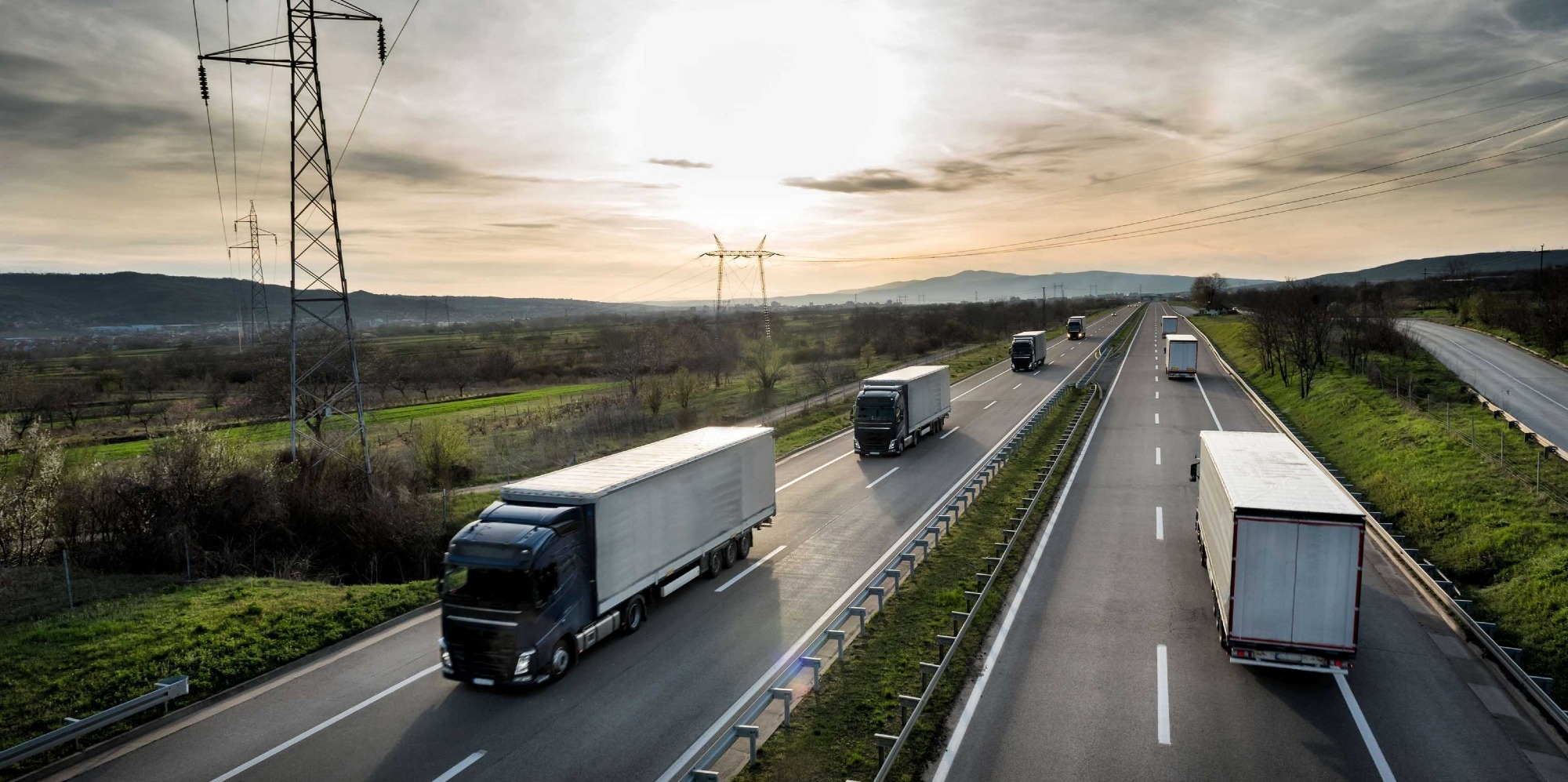Without political measures for zero-emission technologies, a significant proportion of heavy goods vehicles will still run on diesel in 2035. This result is shown in a new ETH Zurich study on the decarbonisation of truck traffic.

Image Credit: ETH Zurich
What will power lorries in the future? Climate-damaging diesel, or emission-free technologies such as batteries or hydrogen? Whether the international community achieves the Paris climate target of net zero greenhouse gas emissions by 2050 also depends on whether it succeeds in decarbonising heavy goods traffic. This is because these account for almost one-third of annual global emissions in the transport sector, which is responsible for around one-fifth of CO2 emissions worldwide.
Researchers at ETH Zurich have now developed a model to investigate which technologies will prevail in truck traffic by 2035. The results are sobering: a large proportion of heavy lorries will continue to be powered by diesel or liquefied natural gas (LNG). “Without political measures to decarbonise heavy goods traffic, green technologies have no chance,” explains Tobias Schmidt, Professor of Energy and Technology Policy at ETH Zurich and coauthor of the study, which has just been published in the journal Proceedings of the National Academy of Sciences (PNAS).
Focus on Overall Costs
In their model, the researchers consider three weight classes with different driving profiles: on average, vans weighing roughly 3.5 tonnes and covering 75 kilometres a day without loading or refuelling; medium goods vehicles weighing roughly 7.5 tonnes and covering 200 kilometres a day; and heavy goods vehicles weighing roughly 32 tonnes and covering 600 kilometres a day.
The adoption of zero-emission trucks powered by batteries or green hydrogen hinges on their cost relative to traditional internal combustion engine vehicles. The researchers assume that investors focus on total costs incurred over the lifetime of a truck.
These costs consist of procurement and operating costs such as the cost of fuel, wages, maintenance, insurance and tolls. The researchers further assume that companies will partly invest in the recharging and refuelling infrastructure of battery and hydrogen trucks themselves. These costs are charged to an electric truck for the use of the infrastructure over its lifetime.
Operating Costs are Decisive
“When all lifetime costs are taken into account, battery-powered vans and medium goods vehicles are already cheaper than diesel lorries in many European countries,” says Bessie Noll, a postdoctoral researcher in Schmidt’s research group and the study’s lead author. This is due to their lower operating costs over the entire service life. Hydrogen lorries are by far the most expensive in these two weight classes, the reason being high prices for fuel cells and green hydrogen.
It’s a different story for heavy lorries: diesel and LNG remain the cheapest fuels, with green hydrogen the most expensive option. Only in Switzerland are heavy goods vehicles powered by batteries or green hydrogen already cheaper today. The reason for this is the high toll costs that diesel lorries incur due to the country’s distance-related heavy vehicle fee (HVF). Emission-free vehicles over 3.5 tonnes are exempt from this toll.
“Whether CO2-free lorries are competitive currently depends on whether their higher purchase price is offset by lower operating costs over their entire service lifetime,” Noll says. The researchers show that fuel prices and toll expenses play a significant role in this regard.
No Progress on Heavy Goods Traffic
Moreover, the model calculations show that the electrification of goods traffic by 2035 is progressing only for light and medium goods vehicles. New battery-powered vehicles will achieve a global market share of over 50 percent in these two vehicle classes by 2035. In Europe and China, they will even account for 70 percent of the total. “We estimate that by 2035, around one-third of new lorries purchased worldwide in the small and medium weight segments will be diesel vehicles,” Noll says.
Things look worse for heavy trucks over 32 tonnes, where the global market share of new lorries that are CO2-free will remain below 10 percent in 2035. For the researchers, one thing is clear: without effective policies that support green powertrain technologies, the majority of heavy lorries will continue to be powered by diesel engines in 2035.
A comparison of different measures also shows that lower toll costs for zero-emission lorries, as practiced in Switzerland, would be the most effective policy instrument to help green technologies achieve a breakthrough in heavy goods traffic.
Hydrogen is Not Competitive
According to the ETH Zurich study, small vans and medium-sized lorries are being electrified almost exclusively with batteries. Hydrogen-powered lorries are simply too expensive in most countries or regions. But there is one exception: in the EU, hydrogen lorries over 32 tonnes could gain some degree of market share. This is mainly related to the assumption that the EU will subsidise green hydrogen in the future, making it cheaper than in other parts of the world.
One reason that batteries are more competitive than green hydrogen for lorries is that a hydrogen-powered truck requires about three times as much renewable electricity as a battery-powered one. “The operating costs are significantly higher with green hydrogen because a lot of energy is lost in the production, distribution and conversion of green hydrogen into electricity,” Schmidt says.
What’s more, it can be assumed that the costs for battery-powered lorries will fall faster than those for hydrogen ones. The reason for this is that the global market share of battery-powered vehicles (cars and lorries) is already significantly higher, leading to greater economies of scale. Added to this is the fact that fuel cells that run on hydrogen are a more complex technology: they require extensive heating, ventilation and air conditioning systems and are generally higher maintenance. “Batteries already have a head start over hydrogen,” Professor Schmidt adds, “and they’re constantly extending their lead thanks to a steeper learning curve.”